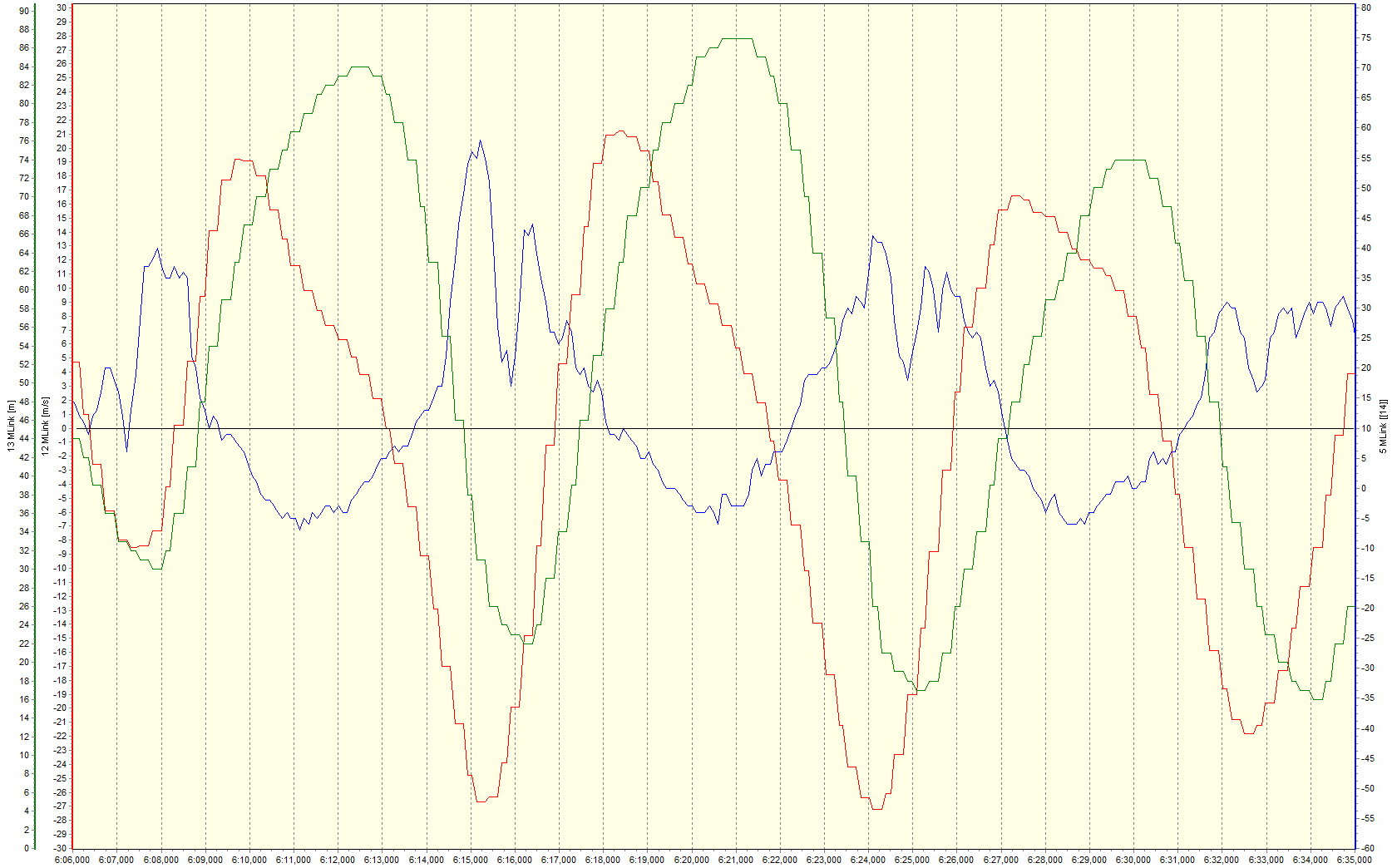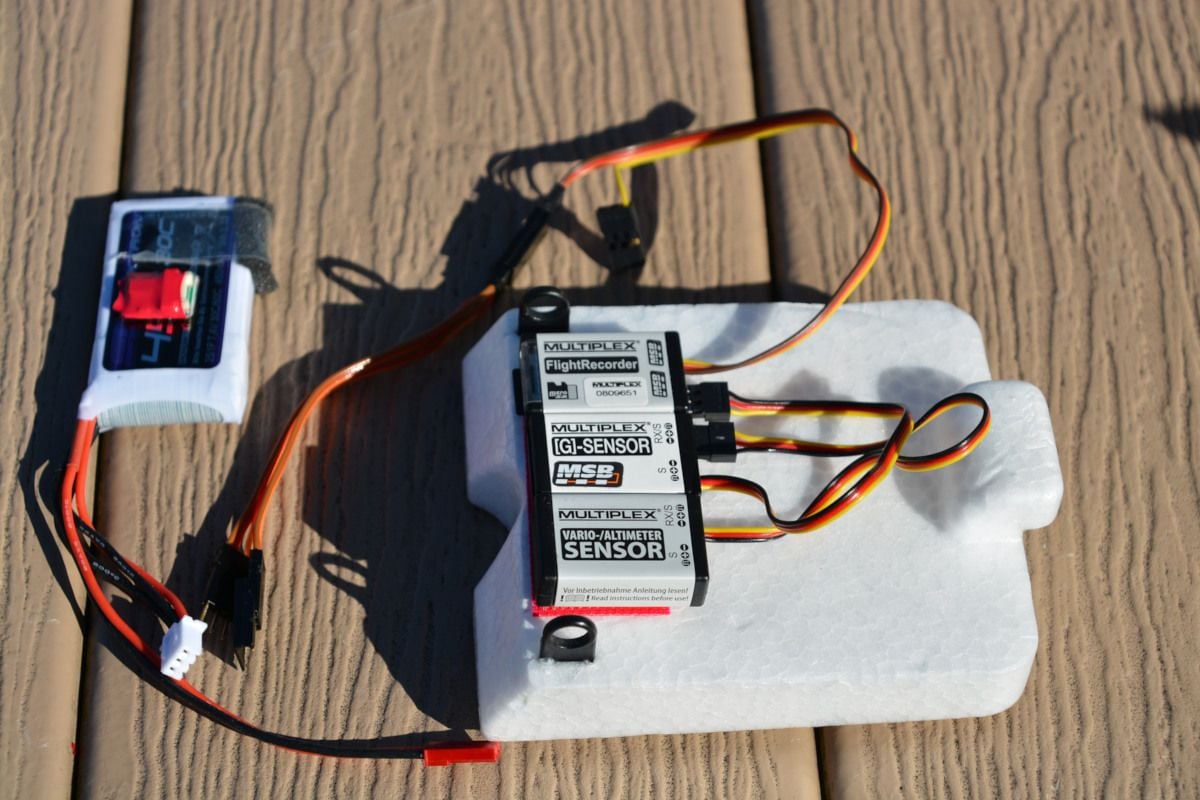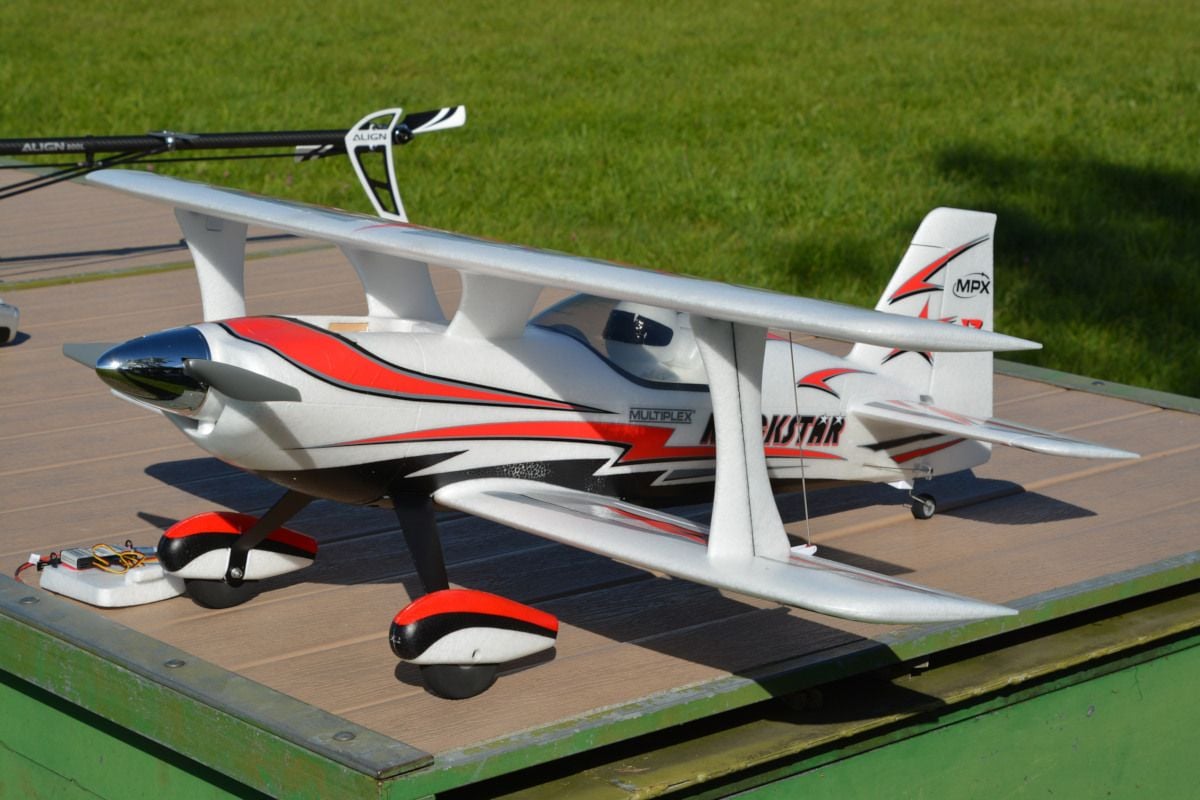Nieuport flick rolls at top of loop
#26
P.S.: Only later I remembered that you mentioned your D7 not stalling like the Nieuport. That's tough because their configuration is very similar. Could just be a different airfoil, but I would rather assume that the Nieuport's elevator power is scarce, the reason why still to find out. It seems to need full up elevator just to keep the loop's upper part round or it would climb up in a straight line until it runs out of speed. (I would try that out.)
Last edited by UStik; 07-15-2020 at 05:28 AM.
#27

My Feedback: (54)
An inverted coordinated level stall would break no different than an up right coordinated stall. An airplane can stall at any angle, attitude and speed. Cutarug, inorder to stop the guessing and armchair piloting, please have someone take a video of the plane doing the maneuver several times from different angles.
#28
Moderator
If the plane can barely pull through the loop due to being underpowered, then we're not dealing with a snap/flick situation. We're dealing with the plane falling out of the loop due to loss of airspeed (inverted stall) and probably being torqued around by the engine after which any self-righting characteristics will take over from knife edge onward. That condition would be aggravated by a design that tends to drop a wingtip; if there's any washout in the wings it will increase the tendency to tip stall when inverted.
I agree, a video of the phenomenon would be helpful.
I agree, a video of the phenomenon would be helpful.
#30
First off, that is a good looking N-27. I have a 1/4 scale N-17 myself. Speaking as someone who just pulled a kilogram of lead off of a 1/4 scale Camel, I can say that it is easy to get tunnel vision when chasing that last centimetre on the CG. We all get accustomed to the mantra that WWI airplanes are tail heavy and that is not without its merits but I concur with the thought that the airplane is nose heavy. I hope your nose weight is easily removable. In my case it was chunks of lead bolted to baffles under the cowl. I would say that the plan to incrementally remove small amounts of nose weight is the way to go. As you can see we all have our opinions but I would really like to hear how it turns out.
The following users liked this post:
RCFlyerDan (07-16-2020)
#31

Thread Starter
Thanks for the positive comments my first Covit project, we are now in lock down so no chance of testing it now.
I have had time to make a few changes though, steerable tail skid, bolly prop which gave me an extra 1 kg f thrust and made a jig to balance it properly.
Lots o 3d printed parts on this model, wheels, guns, pilot, cover plates windscreen etc.
I am confident it will be a better flyer now with the extra thrust.
I have had time to make a few changes though, steerable tail skid, bolly prop which gave me an extra 1 kg f thrust and made a jig to balance it properly.
Lots o 3d printed parts on this model, wheels, guns, pilot, cover plates windscreen etc.
I am confident it will be a better flyer now with the extra thrust.
#32
A little off topic, but what is the engine on the Nieuport? I have en engine that would benefit from a similar propeller mounting.
#33

Thread Starter
36cc 4 stroke Honda clone running straight petrol with wet sump. Plenty of mass so not much nose weight required. Very smooth running suited to this type of aircraft and scale like.
Best sound you can imagine!
Best sound you can imagine!
#34
Spiffy!, Is the propeller shaft a shop made item or is it a commercial product?
#35

My Feedback: (3)
Anyone suggested at 2 or 3 mistakes high to dip the nose a bit to build up speed then roll inverted and see if you can hold it inverted. If you can hold it inverted without it flicking until it stalls I would think the wing geometry must be near correct. I have found too much elevator for a given CofG will cause a snap in just about any plane but usually when pulling out of upward of downward lines, but I have seen them in straight and level flight with too aggressive elevator moments.
Remember WW1 planes did not do round loops usually they were egg shaped at best and sometimes there was a near stall at the top with the airframe falling out of the loop.
Dennis
Remember WW1 planes did not do round loops usually they were egg shaped at best and sometimes there was a near stall at the top with the airframe falling out of the loop.
Dennis
#36

Join Date: Oct 2002
Location: Chilliwack, BC, CANADA
Posts: 12,425
Likes: 0
Received 22 Likes
on
19 Posts
Cutarug, I'm thinking that jester is right and it's falling out of the loop due to insufficient speed. What's happening is that as you go over the top it stops pulling outward and the G load on the model goes negative. Like inverted flying negative. But not fast enough so it stalls and flicks out of the loop. Try a little more speed/longer dive and use a little extra up as it slows down to see if it makes it around.
#38

Join Date: Oct 2002
Location: Chilliwack, BC, CANADA
Posts: 12,425
Likes: 0
Received 22 Likes
on
19 Posts
I'm guessing that he may be confusing a "flick" with an inverted stall with wing fall off. Hard to say for sure without a video or being there.
I've never seen a situation where a model stalled due to high positive G and snapped out of a loop as it passes over the top. Oh sure, speed falls off but so does gravity. So I'm inclined to think that it's a lack of sufficient speed to do a nice clean arc over the top and instead it's running out of speed and being loaded inverted and perhaps stalling out before the nose is pointed back downhill.
I've never seen a situation where a model stalled due to high positive G and snapped out of a loop as it passes over the top. Oh sure, speed falls off but so does gravity. So I'm inclined to think that it's a lack of sufficient speed to do a nice clean arc over the top and instead it's running out of speed and being loaded inverted and perhaps stalling out before the nose is pointed back downhill.
#39

My Feedback: (29)
Bruce, if Im not mistaken what we call a snap roll in in the states many others call a flick roll. That being said I have seen this issue many times in the pattern sportsman class. The sportsman sequence has a two consecutive loop maneuver that tends to bite newbie pattern pilots in the butt. Typically new guys to pattern have their controls set way too hot, add in that most R/C pilots set their CG too far forward. The end result is that some guys during that double loop will come into the first loop with plenty of speed but get off the power too much during the backside and get back into the power too late. Then trying to get through the second loop they pull too much elevator and the airplane snaps out of the loop. It's a combination of the three things, change any of them I.E. move CG rearward a smidge, reduce overall elevator throw or fly faster and the airplane stops snapping out of the loop.
#40

Join Date: Oct 2002
Location: Chilliwack, BC, CANADA
Posts: 12,425
Likes: 0
Received 22 Likes
on
19 Posts
Yeah, you're certainly right that this can be an issue. And it may well be what is happening. The issue we're fighting is that we weren't there to see what happened.
And ya, flick and snap to me mean the same thing.
And ya, flick and snap to me mean the same thing.
#41
Bump.
cutarug, in case it helps you, I measured the G-loads during loops (just for the fun of it). Those were not precision loops, just "normal", that is flown not especially slow and wide and not especially fast and tight either. It turns out that close to the top about -1/2 G (inverted) are acting on the airplane so half of its weight is borne by its wings and the other half by centrifugal force, as it were. Faster and tighter would mean more centrifugal force and less inverted wing lift, slower and wider vice versa. Compare to what your loops look like. For what it's worth...
You may have a look at a short video which shows three consecutive loops (actually the airplane like a speck in the sky), followed by two loops showing that the airplane goes up in a straight line when the elevator is released to neutral in the second quarter of the loop (make it full-screen).
The following diagram shows the measured data for the first three loops. Altitude (green) goes up and then down like waves, the loops unprecise with different top and bottom altitudes. Climb rate goes up in the loop's first quarter and down in the second, below zero in the third, and back to zero in the fourth. Altitude and climb/sink rate seem not quite synchronous. That may be a delay in calculating the climb/sink rate from altitude change, but I don't know.
G-rate is shown in tenths here, +10 being 1 G in upright flight. Anyway, G-rate goes down to -5 (-1/2 G) in all three loops' second quarter: The airplane has to crest the loop-top inverted on its wings. When flaring to level flight in the loop's fourth quarter I pulled up to 4 or even 6 G.

Altitude [m] green, climb/sink rate [m/s] red, G-rate blue (+10 is 1 G in upright flight, 0 is weightless, -5 is 1/2 G inverted).
Just to show how it has been done: I picked two sensors, a data logger, and a battery from other models and Velcroed them under an aerobatic biplane's hatch.

G-rate sensor in the middle, altimeter/variometer below, data logger above, small 2s battery left.
That all just fit in the battery compartment, the hatch was just flush with the fuselage. Ram air pressure from the opening under the spinner is in the whole fuselage and may distort the barometric measurements (altitude from air pressure and variometer calculated from altitude change rate).

Again the hatch with sensors and the biplane.
Electric foamie, wingspan 41", weight 4#, thrust/weight about 1.

3D capable biplane with huge controls.
cutarug, in case it helps you, I measured the G-loads during loops (just for the fun of it). Those were not precision loops, just "normal", that is flown not especially slow and wide and not especially fast and tight either. It turns out that close to the top about -1/2 G (inverted) are acting on the airplane so half of its weight is borne by its wings and the other half by centrifugal force, as it were. Faster and tighter would mean more centrifugal force and less inverted wing lift, slower and wider vice versa. Compare to what your loops look like. For what it's worth...
You may have a look at a short video which shows three consecutive loops (actually the airplane like a speck in the sky), followed by two loops showing that the airplane goes up in a straight line when the elevator is released to neutral in the second quarter of the loop (make it full-screen).
The following diagram shows the measured data for the first three loops. Altitude (green) goes up and then down like waves, the loops unprecise with different top and bottom altitudes. Climb rate goes up in the loop's first quarter and down in the second, below zero in the third, and back to zero in the fourth. Altitude and climb/sink rate seem not quite synchronous. That may be a delay in calculating the climb/sink rate from altitude change, but I don't know.
G-rate is shown in tenths here, +10 being 1 G in upright flight. Anyway, G-rate goes down to -5 (-1/2 G) in all three loops' second quarter: The airplane has to crest the loop-top inverted on its wings. When flaring to level flight in the loop's fourth quarter I pulled up to 4 or even 6 G.

Altitude [m] green, climb/sink rate [m/s] red, G-rate blue (+10 is 1 G in upright flight, 0 is weightless, -5 is 1/2 G inverted).
Just to show how it has been done: I picked two sensors, a data logger, and a battery from other models and Velcroed them under an aerobatic biplane's hatch.

G-rate sensor in the middle, altimeter/variometer below, data logger above, small 2s battery left.
That all just fit in the battery compartment, the hatch was just flush with the fuselage. Ram air pressure from the opening under the spinner is in the whole fuselage and may distort the barometric measurements (altitude from air pressure and variometer calculated from altitude change rate).

Again the hatch with sensors and the biplane.
Electric foamie, wingspan 41", weight 4#, thrust/weight about 1.

3D capable biplane with huge controls.
#42
That's pretty spiffy.
#44

Thread Starter
Finally out of Covit lock down and allowed to go to flying field, Nieuport now flies great,does not fall out of loops.
Turns out it was a COG problem and a bit more nose weight required.
Thanks for all the replies
Turns out it was a COG problem and a bit more nose weight required.
Thanks for all the replies
The following users liked this post:
perttime (11-27-2020)
#46

I have been following this thread all along, but you had enough opinions already that I didn't want to add to the clutter. But now you have a new data point in which you moved the CG forward and the Nieuport no longer snaps at the top of a loop. So what was wrong that was fixed by moving the CG forward ?
The conventional answer would be that moving the CG forward reduced the angle of attack that you could achieve with full aft stick. So maybe you just limited your AOA by moving the CG forward. But that presumes that you were using full elevator. Do you think that's what you were doing ?
The other possibility is a bit less intuitive. Moving CG forward increases directional stibility as well as longitudinal. The N27 has a fairly small vertical stabilizer and a big prop, so maybe you were getting excessive sideslip when you got to the top of the loop and that induced the snap. Remember, coming up over the top of a loop is very similar to taking off. There's a lot of left turning effect due to the low speed and high power. And, if you have enough sideslip angle, the snap can occur at a lower AOA than full stall. In that case, you might have been able to eliminate the snap by bringing in more right rudder as the loop progressed.
Dick
The conventional answer would be that moving the CG forward reduced the angle of attack that you could achieve with full aft stick. So maybe you just limited your AOA by moving the CG forward. But that presumes that you were using full elevator. Do you think that's what you were doing ?
The other possibility is a bit less intuitive. Moving CG forward increases directional stibility as well as longitudinal. The N27 has a fairly small vertical stabilizer and a big prop, so maybe you were getting excessive sideslip when you got to the top of the loop and that induced the snap. Remember, coming up over the top of a loop is very similar to taking off. There's a lot of left turning effect due to the low speed and high power. And, if you have enough sideslip angle, the snap can occur at a lower AOA than full stall. In that case, you might have been able to eliminate the snap by bringing in more right rudder as the loop progressed.
Dick




